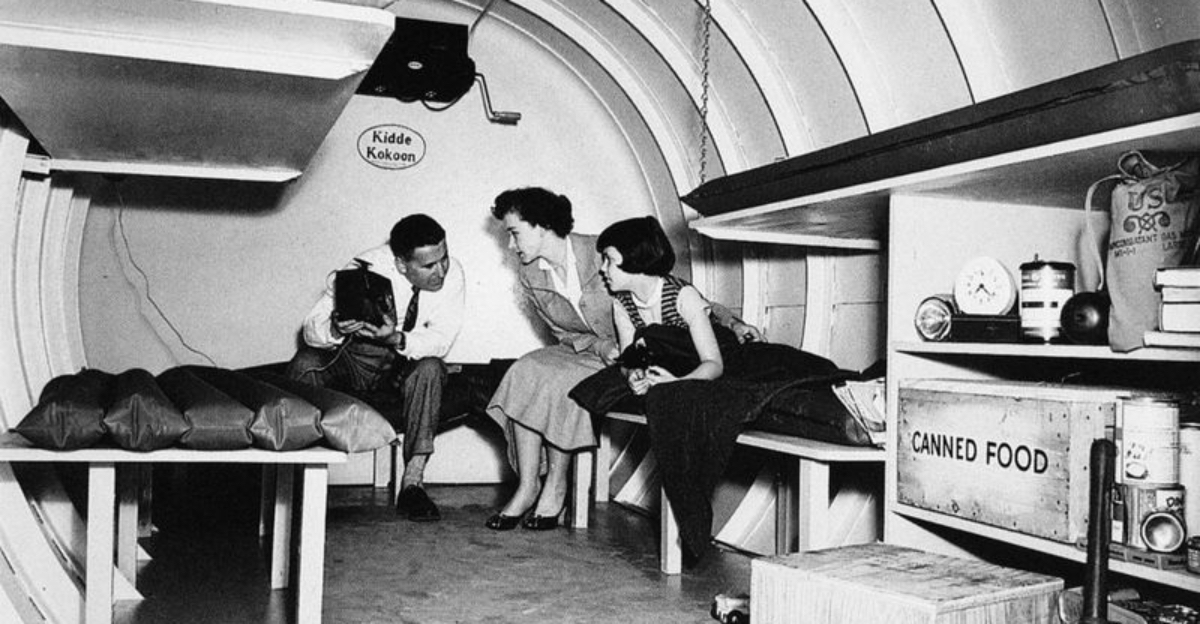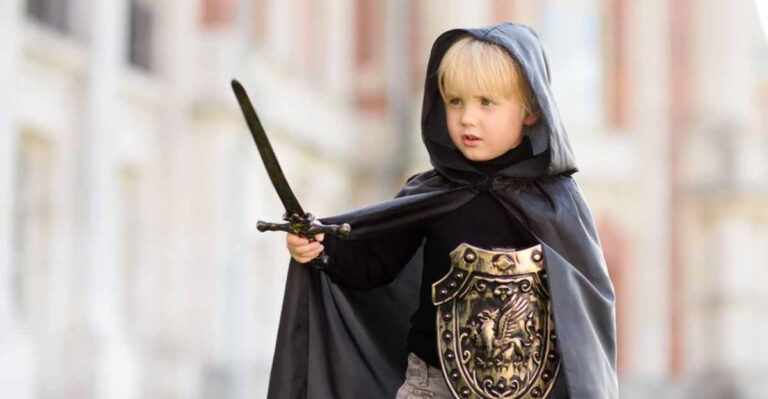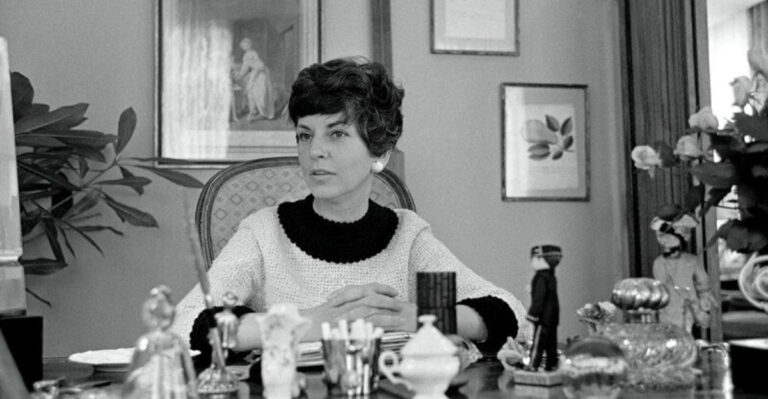34 Unbelievably Outrageous Things That Passed as Normal in the 40s and 50s
We’re about to take a wild ride back to the 40s and 50s—a time when people thought it was totally kosher to smoke in hospitals and use radioactive beauty products. Can you even imagine?
The quirks that were considered part of everyday life back then will make you laugh, gasp, and maybe even appreciate how far we’ve come today. So, let’s jump into this time machine and discover 34 outrageous things that were shockingly normal in those bygone days.
1. Smoking in Hospitals
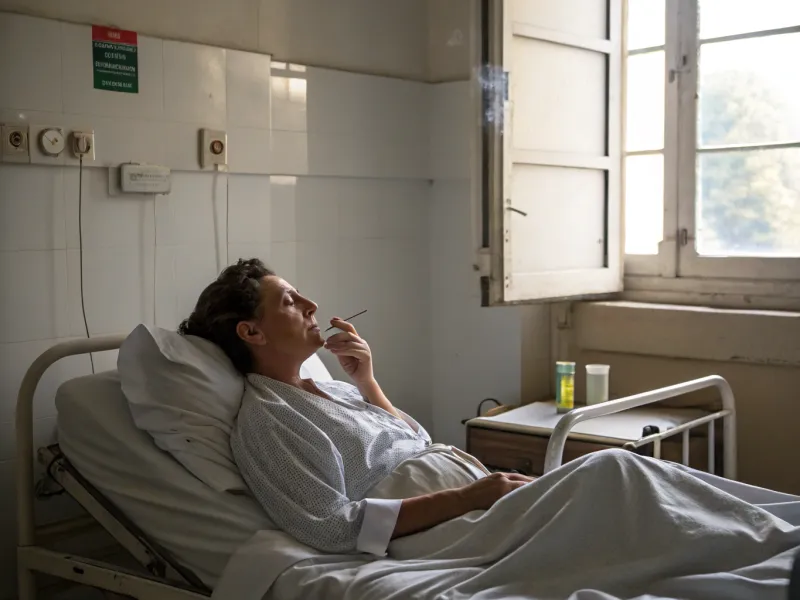
Picture this: It’s the 1940s, you’re lying in a hospital bed, and not only are you battling whatever ailment brought you there, but you’re also inhaling second-hand smoke from the doctor puffing away at your bedside.
Yep, smoking in hospitals was a thing, and it wasn’t just the doctors. Nurses, visitors, and sometimes even patients lit up like it was no big deal. Today, we’d be horrified, but back then, it was all part of the healthcare experience. It’s ironic, isn’t it? Hospitals are supposed to heal, not harm.
The culture around smoking was so ingrained that even in places meant to nurture health, cigarettes were as common as bandages. It wasn’t until the late 20th century that people collectively realized the health implications and put a stop to it. So next time you’re in a hospital and see those ‘No Smoking’ signs, give a little nod to progress. It’s a breath of fresh air in more ways than one.
2. Roller Skating Waitresses
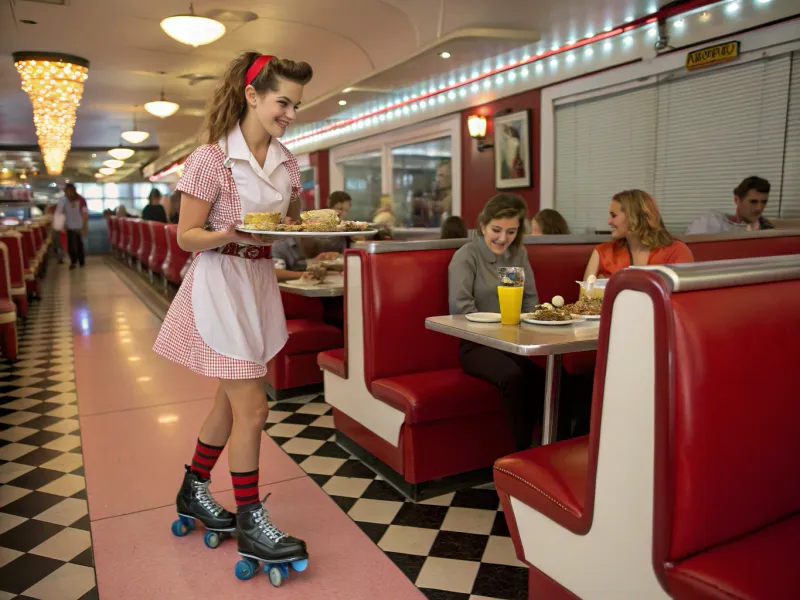
Imagine zipping around a retro diner in roller skates, balancing a tray full of milkshakes, burgers, and fries. Sound like a fun workout? Well, it was just another day at the office for roller skating waitresses in the 50s. These gals were the epitome of multitasking, whizzing between tables while serving up classic American fare with a smile.
Roller skating waitresses were more than just a quirky gimmick—they became iconic symbols of mid-century Americana. The sight of a waitress gracefully gliding through a packed diner was a testament to their skill and agility. Of course, the occasional spill or crash was all part of the charm. Today, you’d be hard-pressed to find a server on wheels, but back then, it was just another day’s work.
This tradition has mostly rolled away, but it remains a nostalgic nod to a time when dining was as much about the experience as it was about the food. Next time you visit a diner, imagine the clatter of skates on tile and appreciate how far we’ve come in the name of customer service.
3. Radioactive Beauty Products
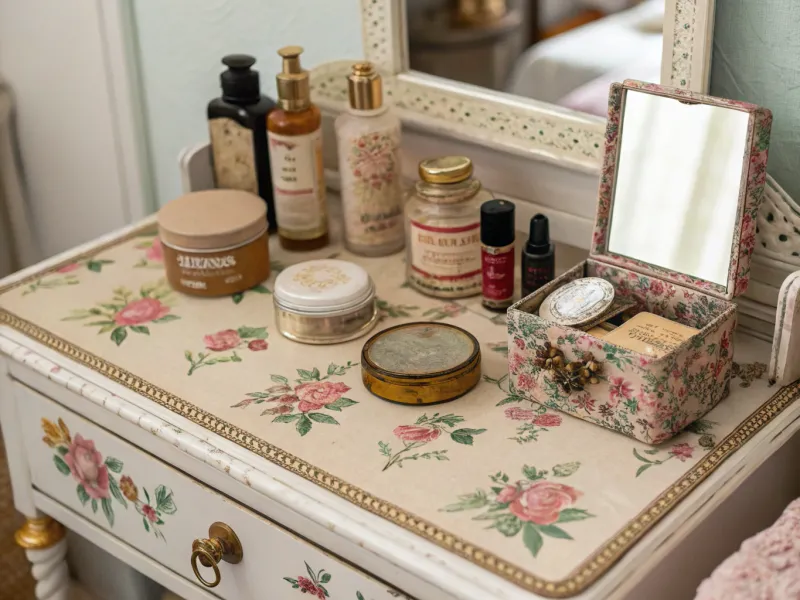
Oh darling, nothing like a little radium to give your complexion that healthy glow, right? In the 40s, beauty was literally radioactive. Women flaunted their radiant skin, thanks to beauty products packed with radium. Yes, the same radium that today we know is, well, deadly. Back then, it was marketed as a miracle ingredient that could rejuvenate the skin and reverse aging.
The belief in radioactive beauty was so widespread that products like radium-laced face creams and powders were all the rage. Women would apply these products, blissfully unaware of the dangers lurking in their beauty routine. It wasn’t until later that the horrific side effects became apparent, and the industry realized that maybe radioactive elements weren’t the best friends of beauty.
Today, we’re blessed with a better understanding of cosmetics and safety standards. So, the next time you’re slathering on your favorite cream, be grateful that the only glow you’re getting is from well-tested ingredients, not radioactivity. Beauty may be skin deep, but safety should always run deeper.
4. Lead-based Makeup
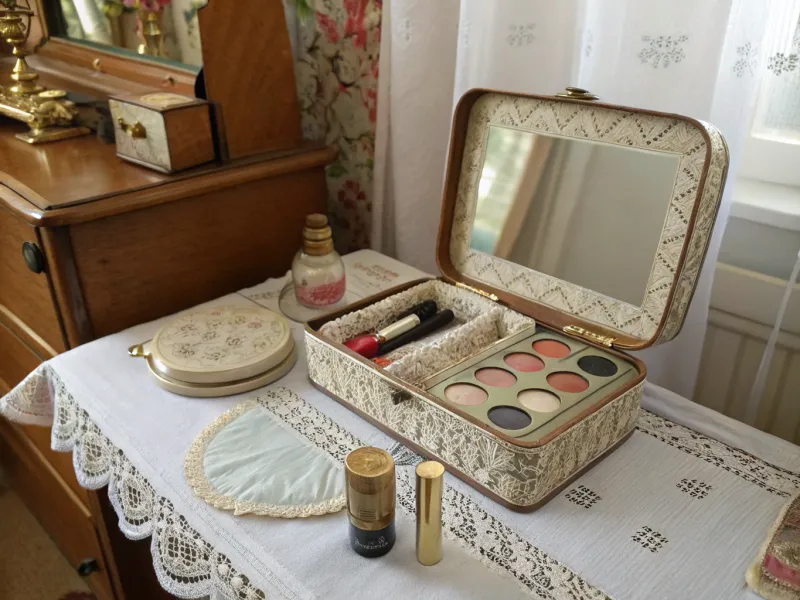
Ah, the quest for beauty—sometimes it took quite the toxic turn. If you thought radioactive face cream was bad, wait until you hear about lead-based makeup. In the 40s and 50s, women unknowingly coated their faces with products containing lead, all in the name of looking fabulous.
Lead was a common ingredient in everything from foundation to lipstick. It provided that smooth, flawless finish everyone craved, but it also came with a host of health issues. Skin irritation and more severe health problems lurked beneath the surface of seemingly innocent cosmetics. Yet, at the time, these products were popular and widely accepted in beauty routines.
While today’s cosmetics are thankfully free from such toxic ingredients, it’s a stark reminder of how far we’ve come in understanding what we put on our skin. So, next time you’re admiring your reflection, remember the lengths people went to for beauty—and appreciate your lead-free glow.
5. Asbestos Everywhere
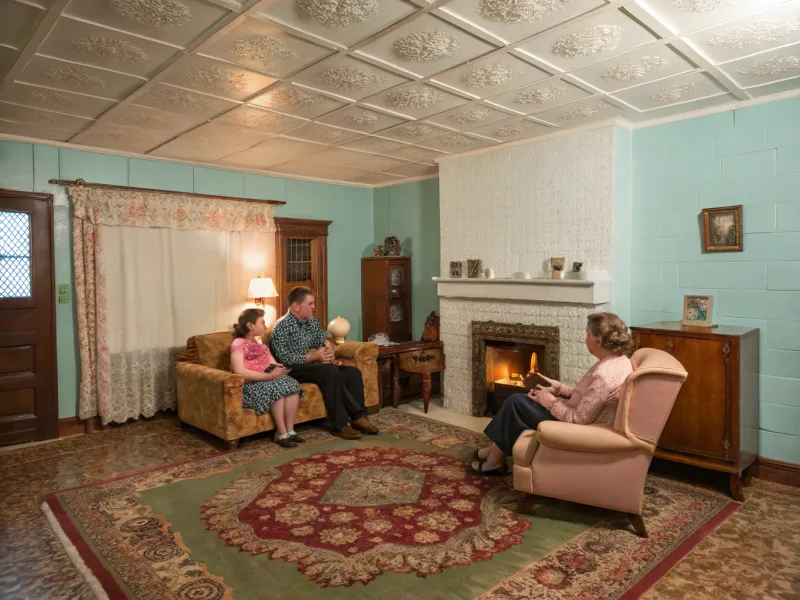
Ah, asbestos, the wonder material of the 20th century. In the 40s and 50s, asbestos was everywhere—from ceiling tiles to insulation and even in household appliances. Its fire-resistant properties made it a popular choice for construction and manufacturing, despite known health risks.
Families lived blissfully unaware in homes laden with the stuff. It wasn’t until the late 20th century that the dangers of asbestos inhalation became widely acknowledged, leading to a wave of removals and regulations. Back then, though, it was seen as a miracle material rather than a health hazard.
Today, the very mention of asbestos is enough to send shivers down the spine. It’s a stark contrast to a time when it was touted as a household staple. So, when you’re cozying up in your living room, take a moment to be thankful for modern safety standards and the safer materials that keep us snug and sound.
6. Iron Lungs for Polio
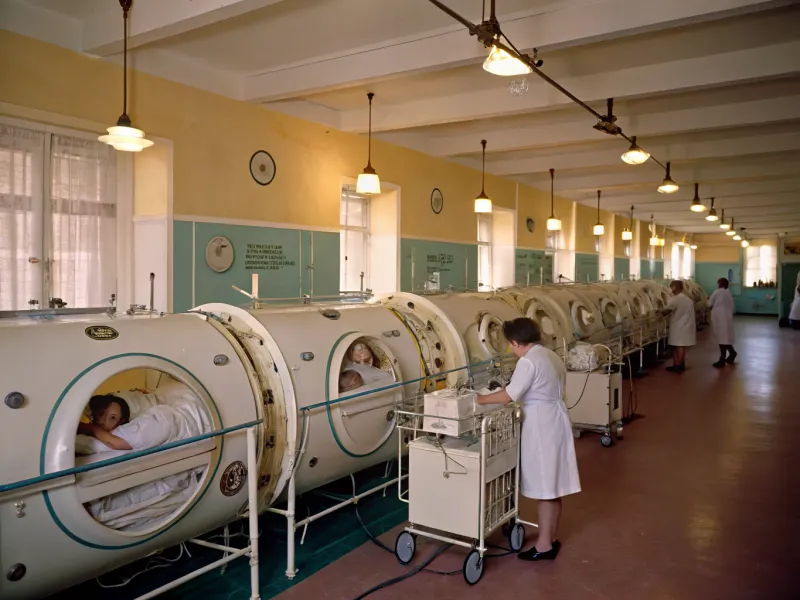
Step into a 1950s hospital, and you might have found a room filled with iron lungs—a sobering testament to the polio epidemic. These cumbersome contraptions helped polio-stricken patients breathe, a lifeline amid a terrifying health crisis.
The iron lung was both a marvel of medical engineering and a harrowing sight. Patients, many of them children, would spend days, months, or even years encased in these metal chambers. For the families, it was a beacon of hope; for the patients, a cumbersome reality.
Thankfully, the advent of vaccines has relegated iron lungs to the annals of history. It’s a poignant reminder of the strides we’ve made in medicine. When you take a deep breath, consider the advancements that allow us to overcome what was once a debilitating disease. Polio may now be virtually eradicated, but the stories of those who once relied on iron lungs remain a testament to human resilience.
7. Segregated Schools
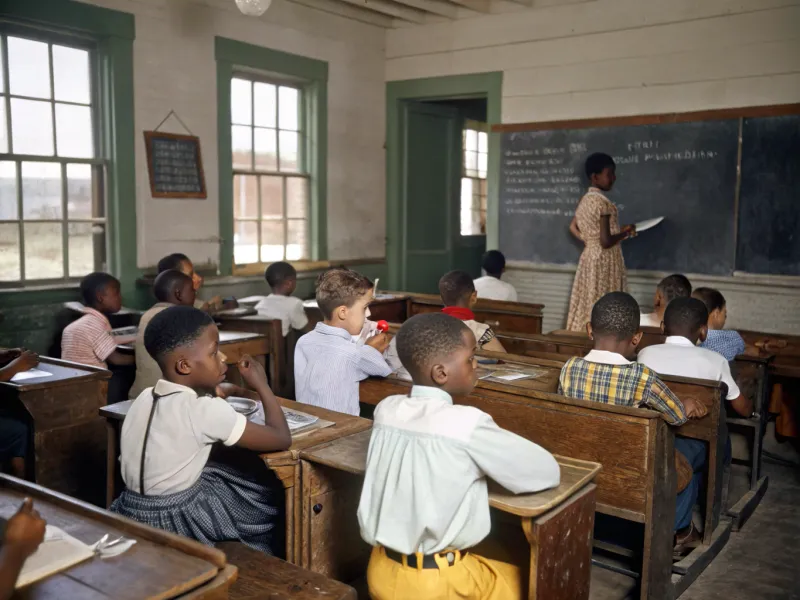
Picture a classroom in the 50s—bright-eyed students, eager to learn, yet divided by an invisible line of segregation. The concept of separate but equal was a stark reality, with African American and white students attending separate schools, often with vastly unequal resources.
Segregated schools were a product of the racial divide, maintaining a system of inequality under the guise of normalcy. It wasn’t until the civil rights movement gained momentum that significant changes began to unfold.
Today, while segregation in schools is legally abolished, the echoes of those divided classrooms linger in discussions about equality and education. Reflecting on this past reminds us of the ongoing journey toward true equality and the importance of nurturing inclusive environments for future generations.
8. Diner Jukeboxes
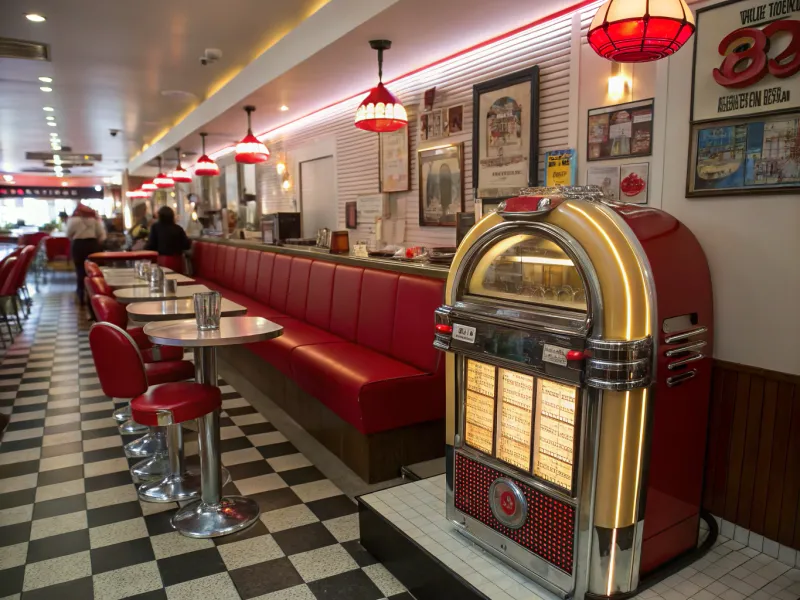
Imagine walking into a diner and being greeted by the hum of a jukebox, the heart of 50s dining culture. These music machines were the soul of diners, playing everything from rock ‘n’ roll to soulful ballads. Each table had its own mini-jukebox, allowing diners to select tunes with the flip of a dime.
Jukeboxes created an atmosphere where music and dining converged, capturing the spirit of mid-century America. The click and clatter of selection buttons became part of the dining experience, providing a soundtrack to meals and conversations.
Today, while digital playlists have replaced these mechanical wonders, the nostalgia of a jukebox remains. They symbolize a time when music wasn’t just listened to, but shared, offering a communal backdrop to everyday life. So next time you play a retro tune, remember the jukebox’s role in weaving music into the fabric of daily moments.
9. Gender-specific Job Ads
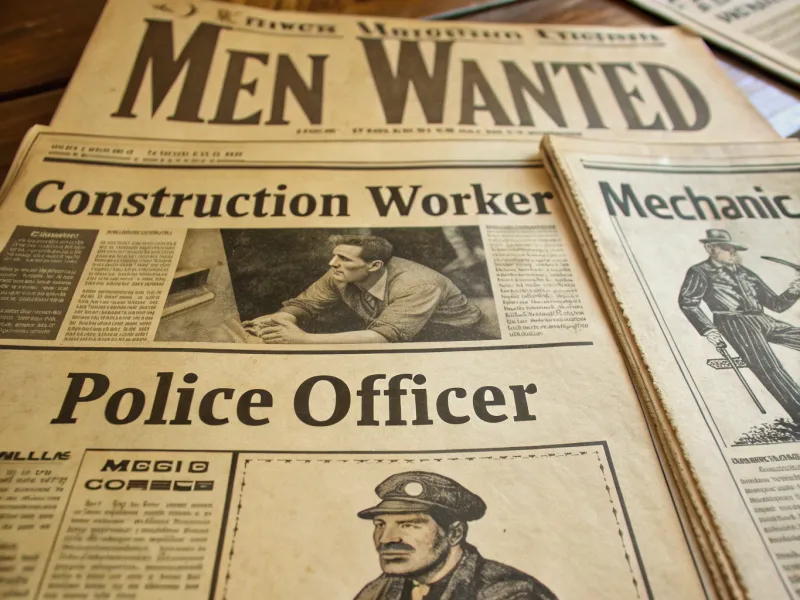
Once upon a time, perusing the classifieds meant navigating job ads strictly divided by gender. Ladies on the lookout for employment would find roles tailored to their ‘feminine skills,’ while men were ushered towards positions befitting their ‘masculine capabilities.’
These gender-specific job ads were a stark reflection of societal norms, reinforcing the idea that men and women inhabited separate spheres of work. Positions for secretaries, nurses, or teachers were predominantly female, while engineering, sales, and management roles were male-dominated.
Today, the job market has opened up significantly, with opportunities available to all regardless of gender. Yet, these old classified sections serve as a reminder of the progress made towards gender equality in the workplace. It’s a testament to the changing tides of time, steering us closer to a world where skill and aptitude prevail over gendered stereotypes.
10. Drive-In Theaters
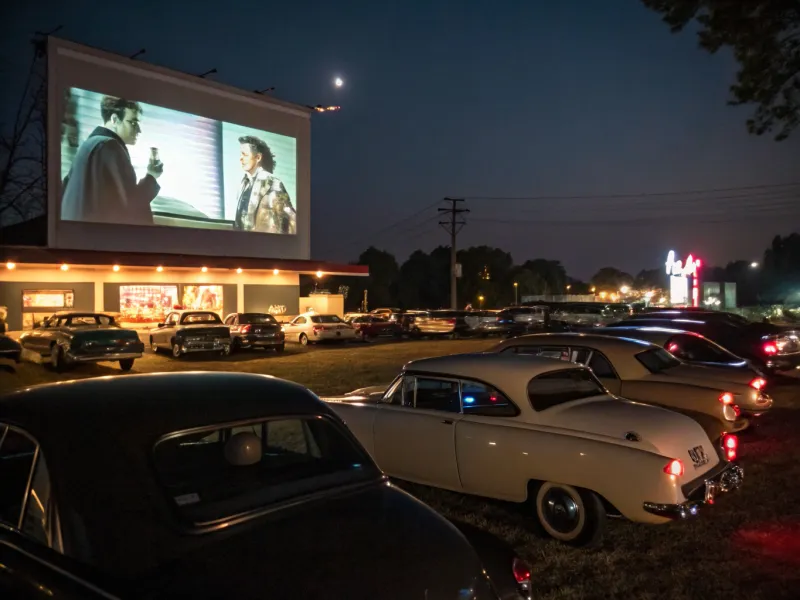
Cue the popcorn and car radios—it’s movie night, 50s style! Drive-in theaters were the ultimate date night destination, where the big screen met the open sky. Families and couples alike piled into their cars, ready to catch the latest flick from the comfort of their own vehicles.
These theaters offered a unique blend of cinema and car culture, allowing audiences to enjoy films under the stars. The experience was as much about the ambiance as it was about the movie itself, creating a communal atmosphere where everyone was tuned into the same story.
While drive-ins have largely faded from the mainstream, they remain a nostalgic symbol of a bygone era. Their charm lives on in memories and the occasional pop-up event, reminding us of simpler times when entertainment meant a night under the stars with a shared cinematic experience.
11. Milk Delivery
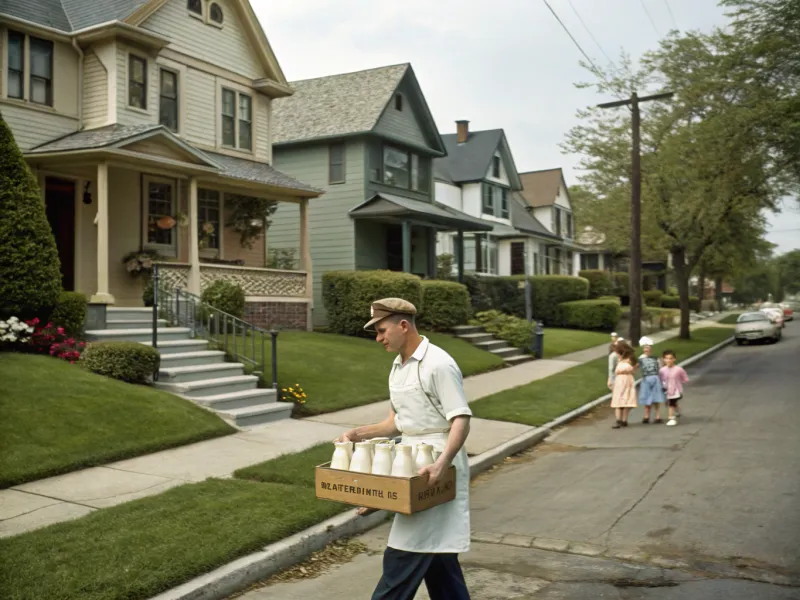
Remember when fresh milk was just a doorstep away? In the 40s and 50s, milkmen were a common sight, delivering glass bottles of the creamy beverage directly to homes. It was the epitome of convenience, ensuring every household had a steady supply of milk without leaving the house.
The clinking of bottles in the early morning was a familiar sound, as milkmen made their rounds, often exchanging empty bottles for full ones. This daily ritual was a staple of suburban life, a small but significant part of the daily rhythm.
Though modern conveniences have all but replaced this charming practice, the memory of the milkman lingers fondly. It’s a reminder of a time when community connections were built on simple, personal interactions, and when fresh milk was just a doorstep away.
12. Conformity in Fashion
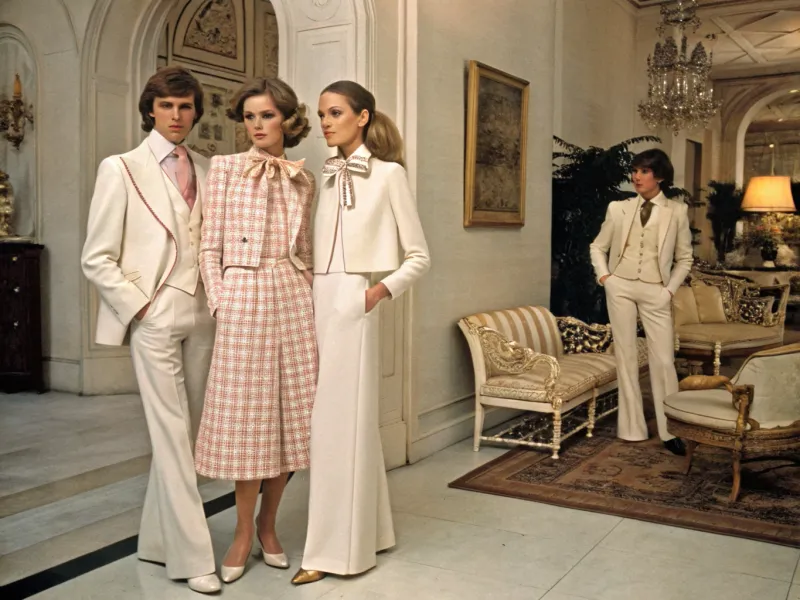
Step into the 50s, where fashion was all about fitting in rather than standing out. Conformity was king, and everyone seemed to follow the same style rulebook. Women donned dresses with cinched waists and full skirts, while men stuck to suits and ties—even for casual outings.
The idea was to present a unified front, a reflection of societal values where maintaining appearances was paramount. Fashion magazines touted the ‘perfect’ look, and deviation from the norm was rare and often frowned upon.
Today, fashion is a vibrant tapestry of diversity, with individuality celebrated over uniformity. The evolution from conformity to creativity in style highlights our journey towards self-expression. So next time you reach for that quirky accessory, give a nod to the past and embrace the freedom to express who you are, not just what you’re expected to be.
13. Door-to-Door Salesmen
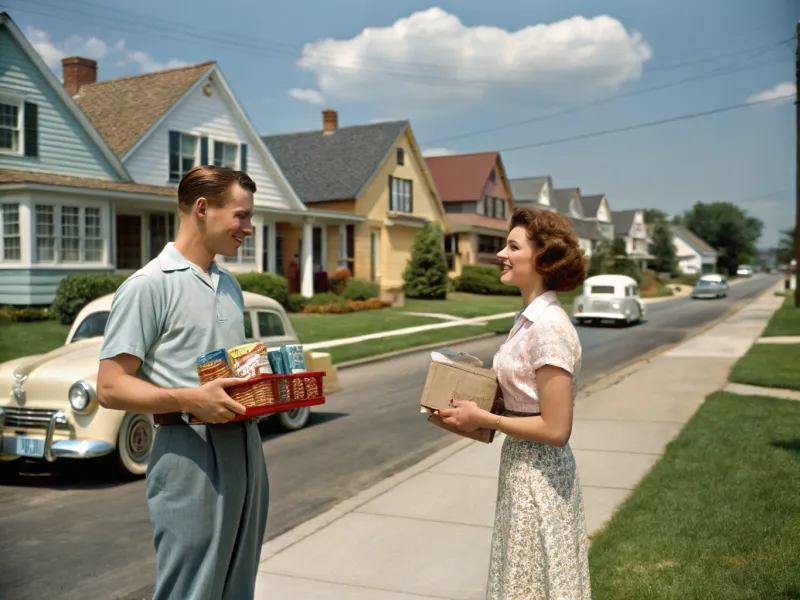
Ding-dong! It’s the 50s, and a door-to-door salesman is at your service, ready to pitch the latest household gadgets. These traveling salesmen were the original influencers, bringing products directly to your doorstep with a personal touch.
From vacuum cleaners to encyclopedias, they were a fixture in everyday life, offering convenience and a touch of novelty. Housewives often welcomed them with curiosity, eager to see what new item they might add to their homes.
While the era of door-to-door sales has largely faded, replaced by digital marketing, it remains a nostalgic nod to a time when shopping was personal and products came with a face and a handshake. It’s a reminder of the days when customer service was as much about the person as it was about the product.
14. Radio Dramas
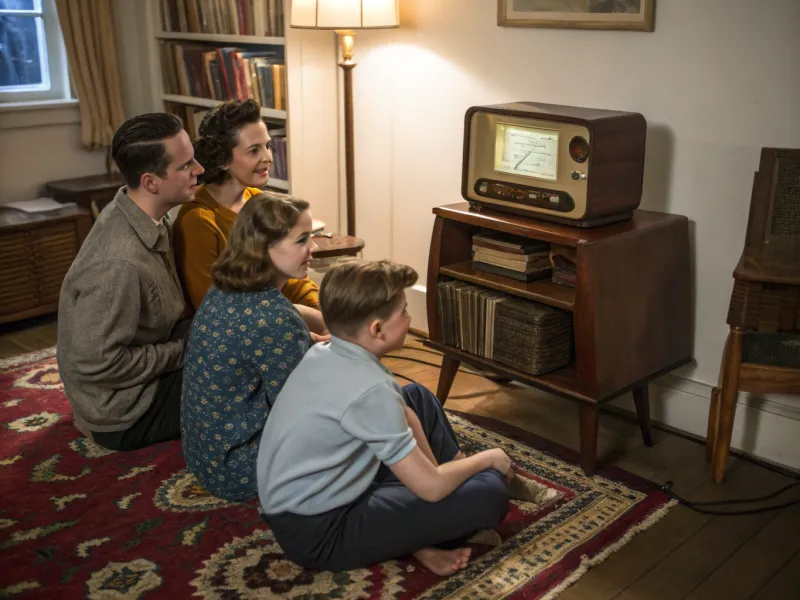
Before Netflix and chill, there was the radio drama—a family affair where imaginations ran wild. In the 40s and 50s, families gathered around the radio to immerse themselves in stories brought to life through sound.
These audio narratives captivated audiences, painting vivid pictures with only voices and sound effects. From suspenseful mysteries to heartwarming tales, radio dramas were the original binge-worthy entertainment, drawing listeners into their world.
Today, while screens dominate our storytelling, the charm of radio dramas endures. Their ability to engage the mind and evoke emotions through audio alone is a testament to the power of storytelling. It’s a reminder of a time when imagination filled in the visual blanks, creating personal interpretations of every tale spun over the airwaves.
15. Manual Typewriters
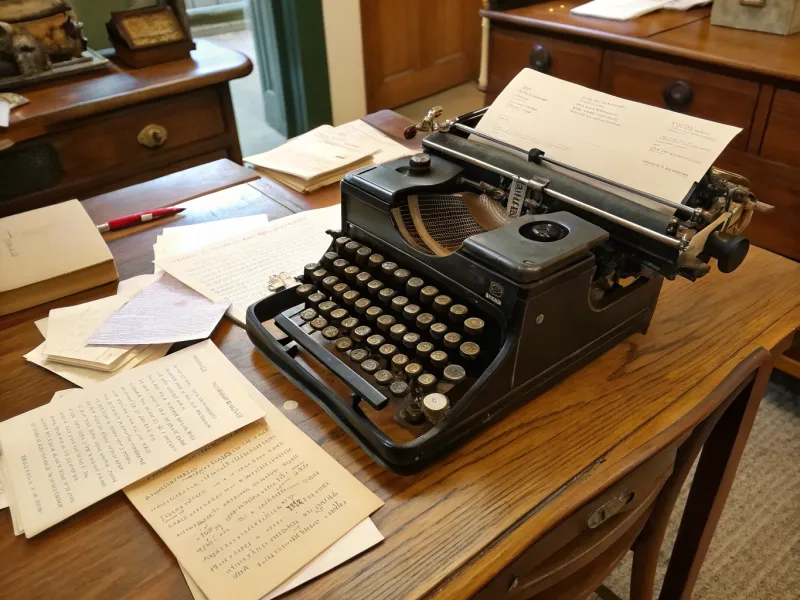
Ah, the rhythmic clatter of keys and the satisfying ding of the carriage return—a symphony of the manual typewriter. In the 40s and 50s, these machines were the backbone of offices and homes, a marvel of mechanical engineering that turned thoughts into tangible words.
Typing on a manual typewriter was an art in itself, requiring precision, speed, and a certain rhythm. Mistakes were met with correction fluid, and each letter pressed was a commitment, literally inked onto the page.
Though digital keyboards have since taken over, the manual typewriter remains a beloved relic of a tactile past. It symbolizes a time when writing was a deliberate act, and each keystroke carried weight. So, if you ever hear the clack of keys, pause to appreciate the nostalgia of a device that transformed ideas into words with every click.
16. Icebox Refrigeration
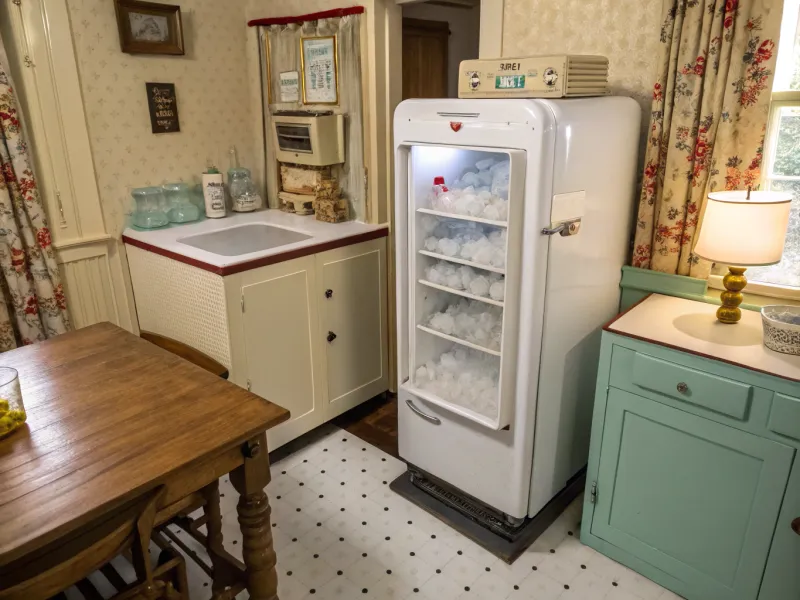
Before the hum of electric refrigerators filled kitchens, there was the icebox—a simple yet ingenious solution to keeping food fresh in the 40s. These insulated wooden cabinets housed blocks of ice, providing a cool environment to store perishable goods.
The icebox was a mainstay in homes, relying on the regular delivery of ice blocks to function. It was an essential part of daily life, requiring a careful balance of ice and ingenuity to keep food from spoiling.
While modern refrigeration has revolutionized food storage, the icebox remains a quaint reminder of a simpler time. It’s a nod to the resourcefulness of past generations, who managed to keep things cool without the convenience of electricity.
17. Home Milk Pasteurization
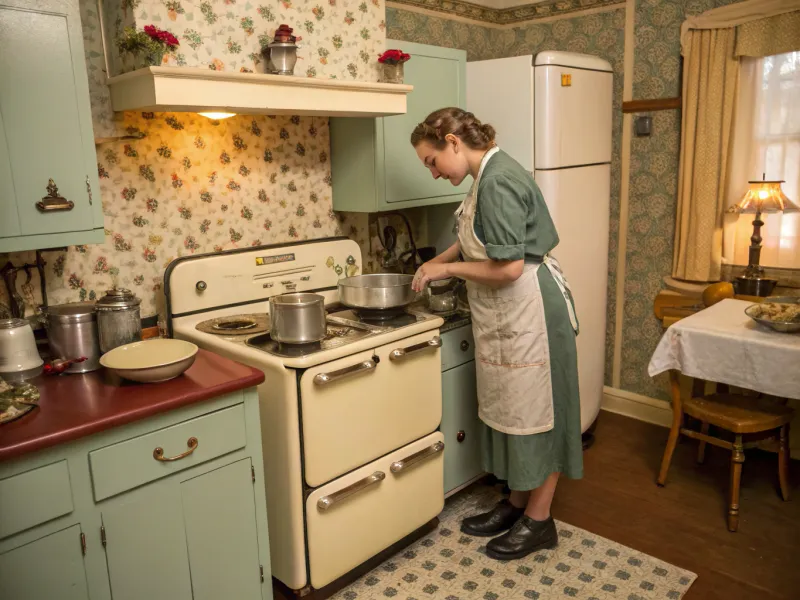
In the days before widespread commercial pasteurization, home milk pasteurization was a common practice. Homemakers took on the task of heating milk to eliminate harmful bacteria, ensuring their family’s health.
This process involved heating milk to a specific temperature and then rapidly cooling it—a true labor of love in the kitchen. It required precision and patience, but it was a necessary step to ensure safe consumption.
Today, with pasteurized milk readily available on store shelves, the home pasteurization process is largely forgotten. Yet, it stands as a testament to the ingenuity and dedication of those who prioritized health and safety long before commercial processes took over. It’s a reminder of the hands-on approach to food safety that paved the way for modern conveniences.
18. The Family Dinner Hour
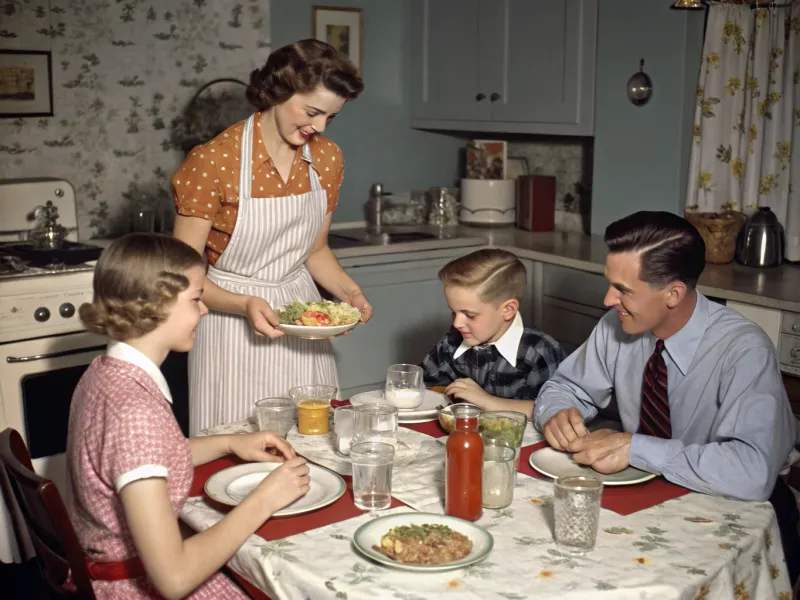
Ah, the family dinner hour—a sacred time in the 50s when everyone gathered around the table to share a meal. This daily ritual was more than just about food; it was about connection, conversation, and a sense of belonging.
Families adhered to this tradition, making dinner a priority despite the hustle and bustle of life. It was a time to catch up, share stories, and strengthen bonds, a cornerstone of family life.
While modern schedules often pull families in different directions, the essence of the family dinner remains cherished. It’s a nod to the importance of carving out time for loved ones, a reminder that amidst the chaos, there’s value in coming together to share not just a meal, but a moment in time.
19. Polaroid Cameras
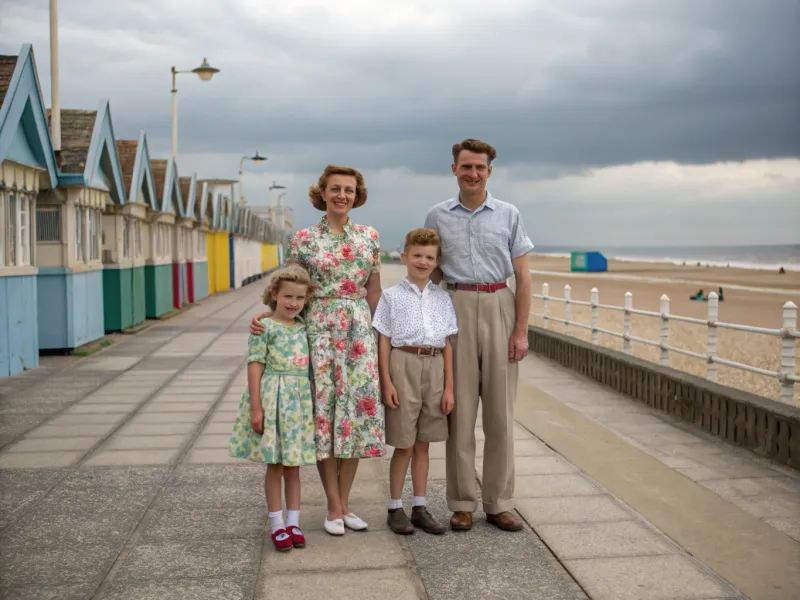
Smile for the camera and watch the magic unfold—a Polaroid photo developing right in front of your eyes. In the 50s, Polaroid cameras were revolutionary, offering instant gratification in the form of printed memories.
These cameras transformed photography, allowing people to capture moments and see the results immediately. They were a hit at parties, family gatherings, and vacations, providing tangible keepsakes in a world before digital imaging.
While instant cameras have evolved, the nostalgia of shaking a Polaroid photo persists. They remind us of a time when capturing a moment meant more than just a click—it was an experience, a shared anticipation of watching a picture come to life before your eyes.
20. Housewives’ Club Meetings
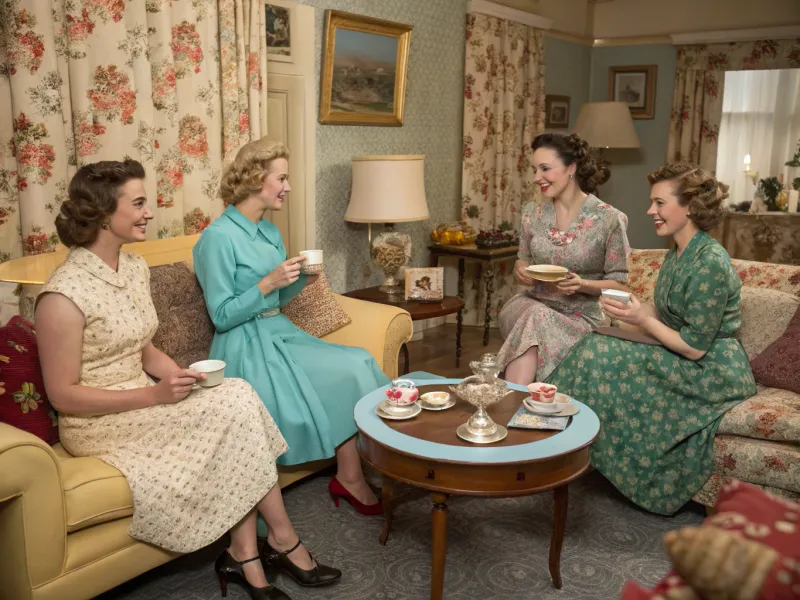
Step into a 50s living room, and you might stumble upon a housewives’ club meeting—a social gathering where homemakers came together to share tips, stories, and a cup of tea. These meetings were lifelines, offering connection and camaraderie in a world where women often stayed home.
Housewives’ clubs were about more than just socializing; they provided a sense of community and support. Women shared household tips, parenting advice, and even engaged in charitable work, creating bonds that extended beyond the confines of their homes.
Though the modern landscape offers a plethora of social networks, the spirit of these clubs lives on. They remind us of the power of community and the importance of having a support system, whether it’s over a cup of tea or through digital means. It’s a nod to the enduring need for connection and the friendships that make our worlds a little brighter.
21. Tupperware Parties
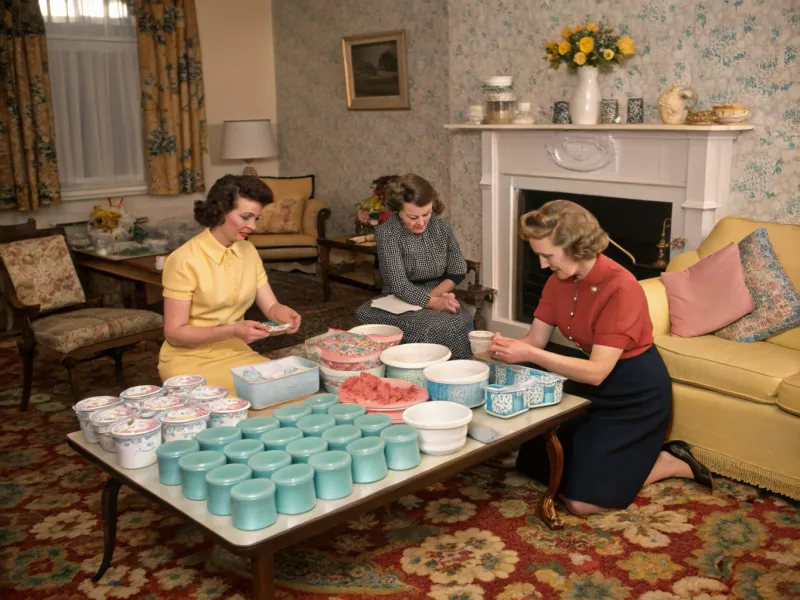
Pop the lid and pass around the Tupperware—it’s party time! In the 50s, Tupperware parties were all the rage, a clever mix of socializing and shopping that brought women together in homes across America.
These gatherings were more than just sales events; they were social happenings, where women showcased and swapped tips on using the latest in food storage technology. Tupperware parties were a novel way to connect, offering a sense of community and empowerment through entrepreneurship.
Today, while direct sales have taken on new forms, the legacy of Tupperware parties endures. They remind us of a time when social circles revolved around home and hearth, where a simple plastic bowl could spark joy and friendship. It’s a celebration of the small inventions that make life a little more organized and a lot more fun.
22. Cold War Duck and Cover Drills
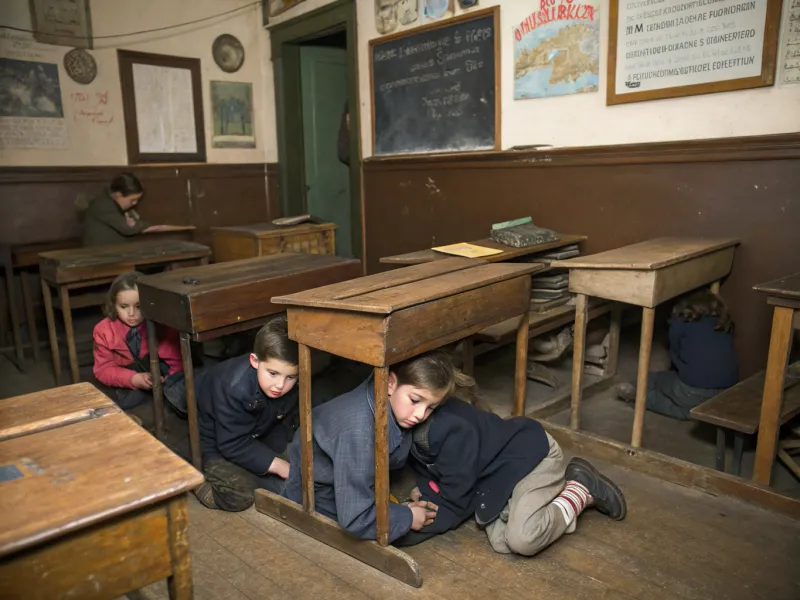
Duck and cover—a phrase that sends a shiver down the spine of anyone who lived through the Cold War era. In the 50s, schoolchildren were drilled to duck under desks in preparation for potential nuclear attacks, a grim reminder of the tensions of the time.
These drills were designed to provide a sense of security, teaching children how to protect themselves in a worst-case scenario. The cheerful instructional films belied the sobering reality behind the drills, instilling a mix of fear and resilience.
While today’s classrooms focus more on educational drills, the memory of duck and cover remains. It’s a stark reminder of a world once on edge, and the lengths to which society went to prepare for the unthinkable. It’s a nod to the resilience of those who faced the shadow of nuclear threat with a brave face and a willingness to learn how to cover.
23. Cold Calling Telemarketing
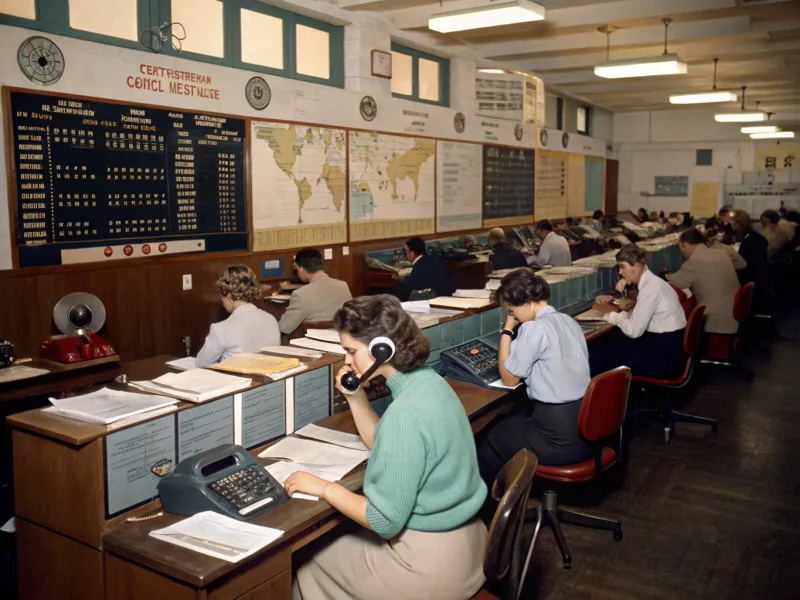
Before spam emails and robocalls, there was cold calling—a telemarketer’s tool in the 50s arsenal. Armed with rotary phones and a list of numbers, telemarketers dialed up potential customers, bringing sales pitches directly to their ears.
Cold calling was an art, relying on charm, persuasion, and a knack for holding a conversation. Telemarketers honed their skills, turning every call into an opportunity, despite the occasional slammed receiver.
While modern technology has transformed telemarketing, the spirit of cold calling persists. It’s a throwback to a time when sales were personal, requiring a touch of human interaction. It’s a reminder of the persistence and adaptability needed to capture attention in a world full of noise.
24. Electric Can Openers
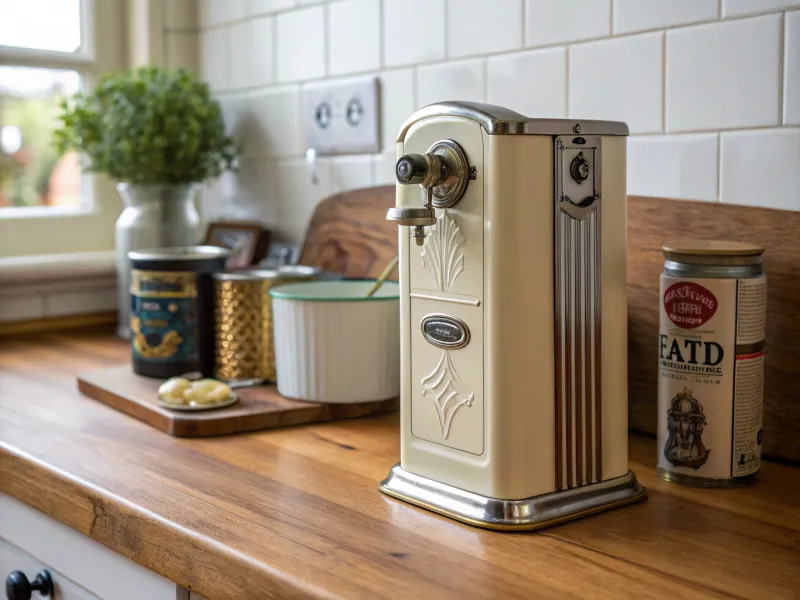
Step into a 50s kitchen and marvel at the electric can opener—a cutting-edge appliance that revolutionized meal prep. This gadget made opening cans a breeze, freeing homemakers from the manual struggle of twist and turn.
The electric can opener was a marvel of convenience, embodying the post-war boom in household technology. It represented the promise of a modern kitchen, where efficiency was king, and time-saving gadgets reigned supreme.
Today, while electric can openers have become common, they remain a symbol of mid-century innovation. They remind us of a time when technology first started making its way into everyday life, transforming simplicity into sophistication. It’s a nod to the small inventions that paved the way for the modern conveniences we often take for granted.
25. Barbershop Quartets
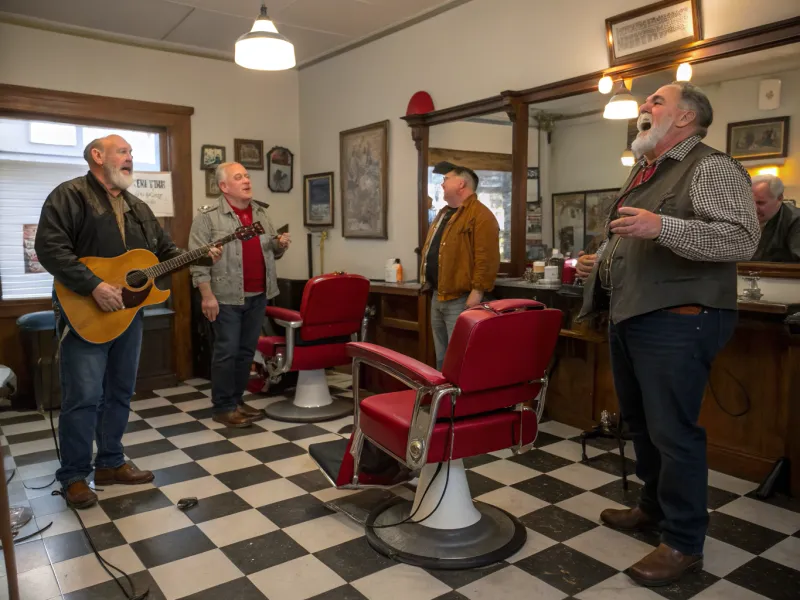
Close your eyes and let the harmonious blend of voices transport you—it’s the sound of a barbershop quartet. In the 50s, these musical groups were the soundtrack of local gatherings, their melodies bringing a sense of community and joy.
Barbershop quartets were more than just entertainers; they were storytellers, harmonizing tales of love and life in their a cappella style. Their music resonated through streets and socials, a nostalgic nod to simpler times.
While modern music has shifted, the charm of barbershop harmony endures. It’s a reminder of the power of song to unite and uplift, transcending time and trends. The next time you hear a harmonious blend of voices, let it take you back to an era where simplicity and melody were all you needed.
26. Poodle Skirts
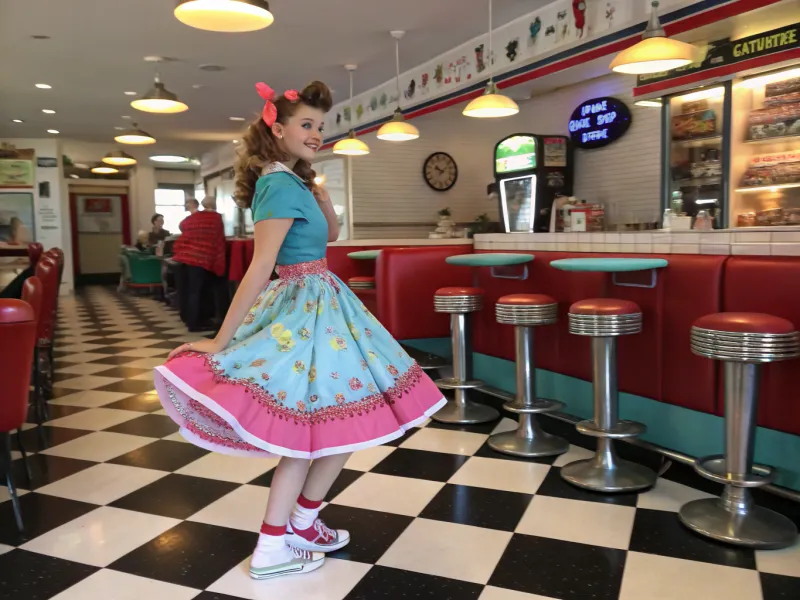
Ah, the poodle skirt—a fashion statement that danced its way into the hearts of 50s teens. These skirts, adorned with appliqués of poodles and other whimsical designs, were the epitome of youthful style.
Poodle skirts were more than just clothing; they were a symbol of adolescent expression. Paired with bobby socks and saddle shoes, they defined a generation eager to embrace fun and flair.
While fashion has evolved, the poodle skirt remains an iconic piece of retro chic. It’s a testament to the enduring appeal of trendsetting styles that capture the spirit of youth. When you see a modern take on retro fashion, remember the poodle skirt’s playful legacy and its dance through time.
27. Canned Meat
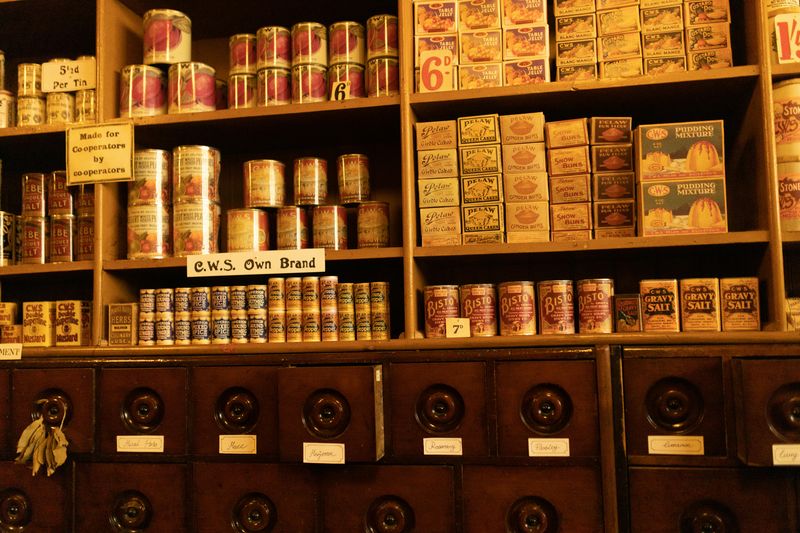
Canned meat—an unlikely hero in the 50s pantry, providing convenience and a touch of culinary creativity. From spam to corned beef, these preserved meats were staples in households, offering quick meal solutions in an era of burgeoning convenience.
Canned meat was both a culinary adventure and a practical choice, fitting the post-war boom in packaged foods. It allowed homemakers to whip up meals with ease, embracing the new era of food technology.
Today, while fresh options abound, canned meat still holds a nostalgic spot in the culinary world. It’s a reminder of a time when innovation met the dinner table, transforming the way families approached meals. As you browse your local grocery aisle, give a nod to the humble can that helped shape modern convenience.
28. Vinyl Records
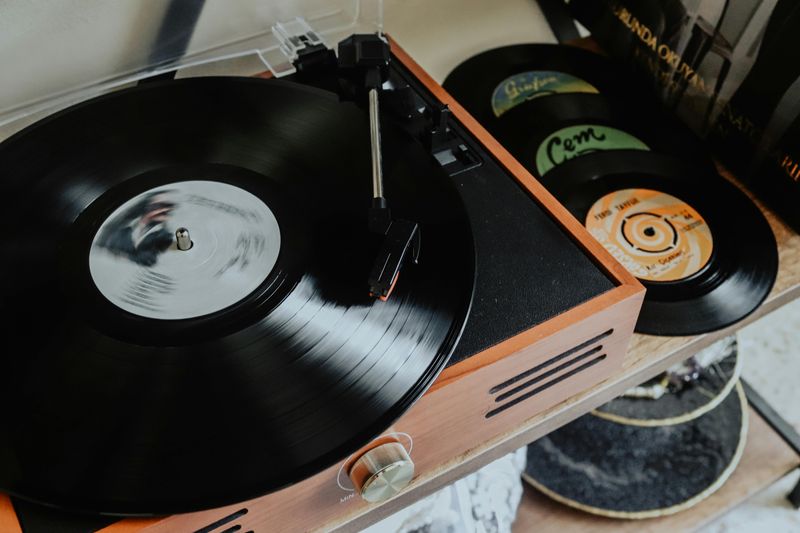
Spin that vinyl and let the music play—a 50s staple that brought soundtracks to life in living rooms everywhere. Vinyl records were the medium of choice, capturing the essence of music with their distinctive crackling sound.
These records transformed listening habits, creating an intimate connection between music and listener. From jazz to rock ‘n’ roll, vinyl records turned homes into concert halls, offering an escape into melodies and memories.
While digital music dominates today, the allure of vinyl endures. It remains a beloved format, cherished for its tactile nature and nostalgic charm. When you drop the needle on a record, you’re connecting with a time when music was a shared experience, woven into the fabric of everyday life.
29. Sunday Drives
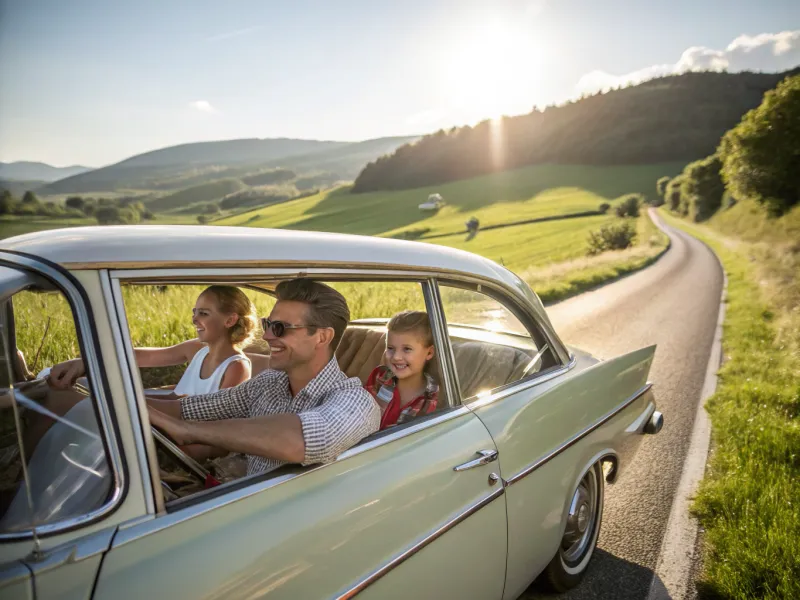
Ah, the Sunday drive—a cherished 50s tradition where families piled into their cars for a leisurely cruise through the countryside. It was an opportunity to unwind, explore, and spend quality time together.
The Sunday drive was more than just a journey; it was a moment of relaxation and discovery, a break from the routine of daily life. Families enjoyed the freedom of the open road, creating cherished memories along the way.
While modern life often keeps us on the go, the essence of the Sunday drive lingers. It’s a reminder of the simple pleasures of taking the scenic route and the joy of being present with loved ones. So next time you hit the road, embrace the spirit of the Sunday drive and savor the journey, not just the destination.
30. Phone Booths
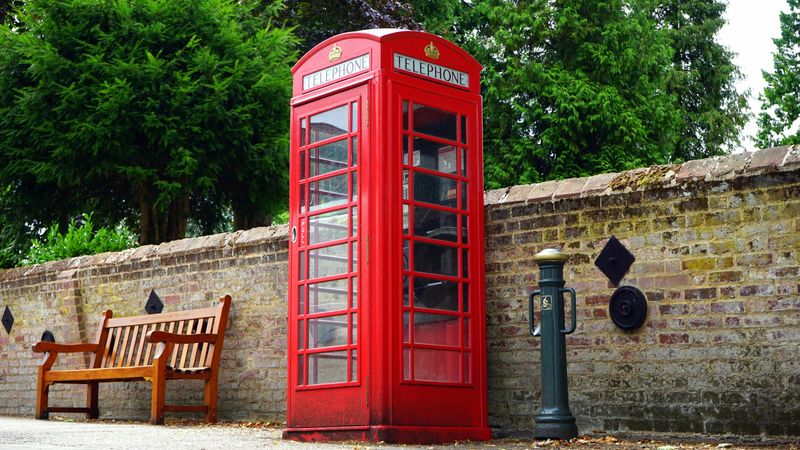
Step inside—it’s a phone booth, a relic of the 50s when these glass boxes connected people across distances. Before the age of smartphones, phone booths were essential, offering a lifeline for communication on the go.
These booths were scattered across cities and towns, standing as sentinels of connectivity. They were places of conversation, convenience, and sometimes, a bit of espionage, if spy movies are to be believed.
Though phone booths have largely vanished, replaced by instant digital communication, they remain a nostalgic symbol of a time when conversations were more deliberate and moments of connection were cherished. The next time you see one, imagine the stories it held and appreciate the leaps we’ve made in staying connected.
31. Sock Hops
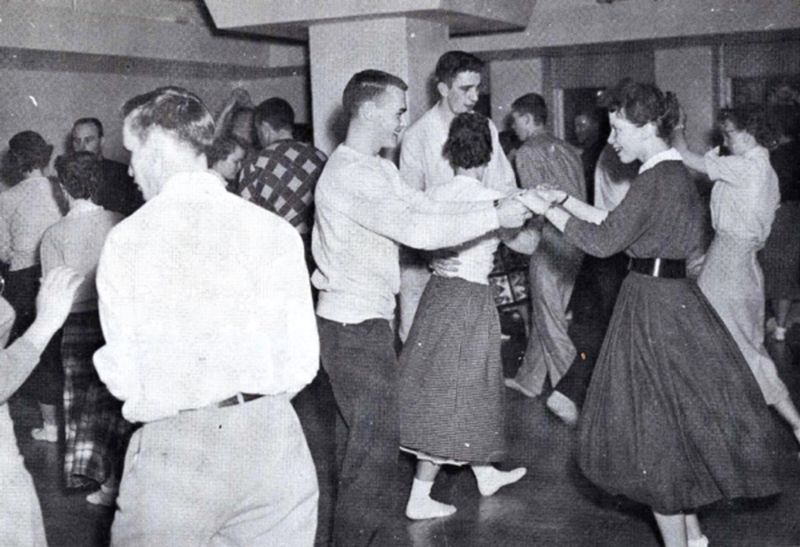
Step into a high school gym in the 1950s and you’ll find teenagers twirling, twisting, and bopping to the latest rock ‘n’ roll hits—without their shoes. These dances, affectionately called sock hops, were the social event of the week. The name came from the requirement to remove shoes to protect the gym floor, so students would dance in their socks, creating a casual, carefree vibe that matched the music of the time.
Sock hops weren’t just dances—they were cultural milestones. They symbolized the birth of teenage independence, the explosion of youth culture, and the growing influence of music icons like Elvis Presley and Chuck Berry. With jukeboxes spinning and poodle skirts swaying, these events became a rite of passage for an entire generation.
Today, sock hops evoke a sense of innocent nostalgia—a time when fun didn’t require flashy venues or fancy outfits, just great music, good friends, and a polished gym floor.
32. TV Dinners
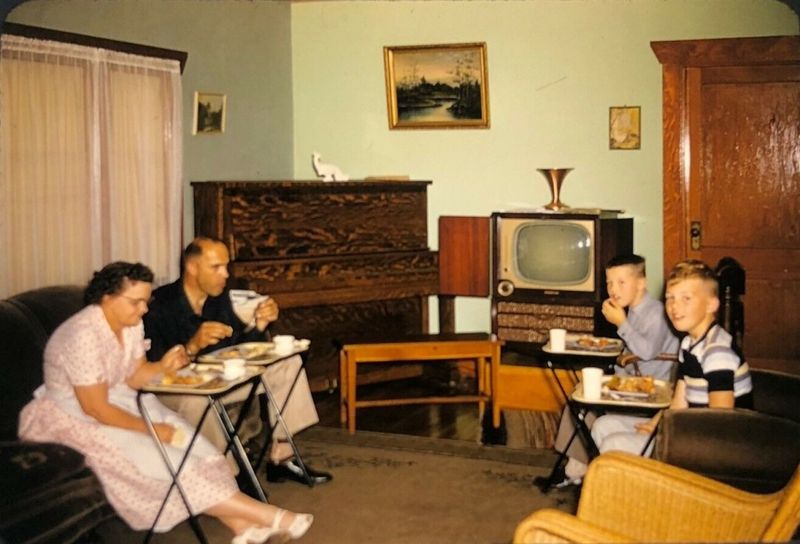
Ah, the TV dinner—an innovation that changed mealtime forever in the 1950s. These pre-packaged, compartmentalized meals became a staple in households across America, offering convenience during a time when television was taking over living rooms. With a flick of the oven knob and a foil-wrapped tray, families could enjoy meatloaf, mashed potatoes, and peas—all while watching their favorite show on the tube.
TV dinners weren’t just about saving time; they symbolized a shift in lifestyle. Mealtime was no longer tied to the kitchen table or a home-cooked ritual. Instead, it became an individual experience, tailored to the pace of modern life. They reflected a cultural move toward efficiency and the growing role of media in daily routines.
While they may not have been gourmet, TV dinners were undeniably iconic. Today, they’re a nostalgic reminder of mid-century innovation and the beginning of the “eat while you watch” phenomenon that still thrives.
33. Cold War Era Bomb Shelters
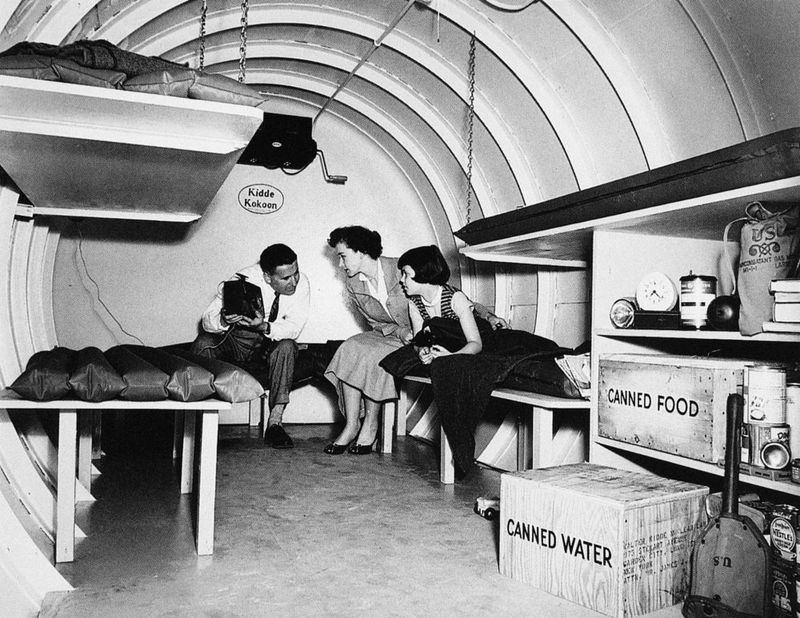
During the Cold War, American families often turned to bomb shelters in their backyards as a perceived necessity. With the looming threat of nuclear war, these shelters promised safety. Constructed from concrete and steel, they were stocked with canned food and essential supplies.
Families would sometimes spend weekends practicing drills, ensuring everyone knew their role in the event of an attack. It was a time of fear and preparation, a period marked by mistrust and anxiety.
Interestingly, these shelters also became social symbols, representing a family’s status and preparedness. It was both a practical and a cultural phenomenon.
34. Public Service Announcements on Polio
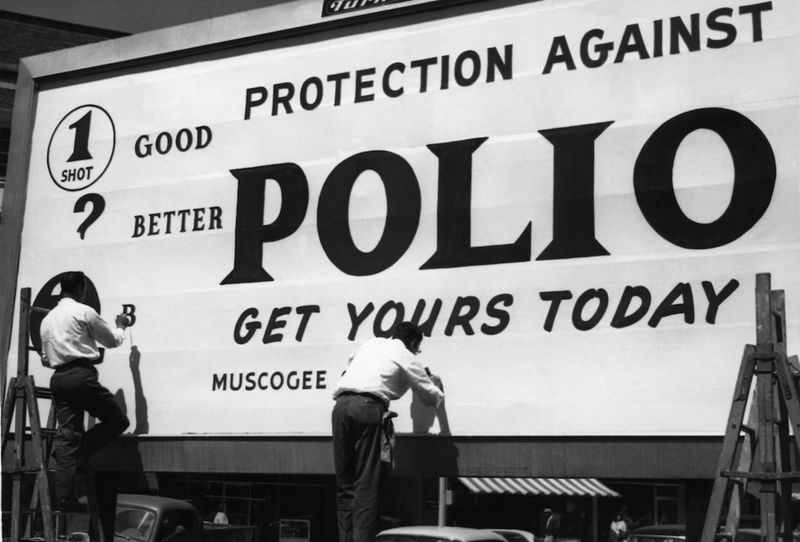
In the 1950s, polio was a feared disease, prompting widespread public service announcements. These televised messages educated families on prevention and the importance of vaccination.
Mothers were particularly targeted, urged to ensure their children received the polio vaccine. This era saw the transition from fear to hope, as the vaccine began to reduce the disease’s grip on society.
PSAs played a crucial role in dispelling myths and promoting scientific understanding. These announcements became a regular feature in households, weaving into the fabric of daily life, and highlighting the collective effort to overcome polio.

